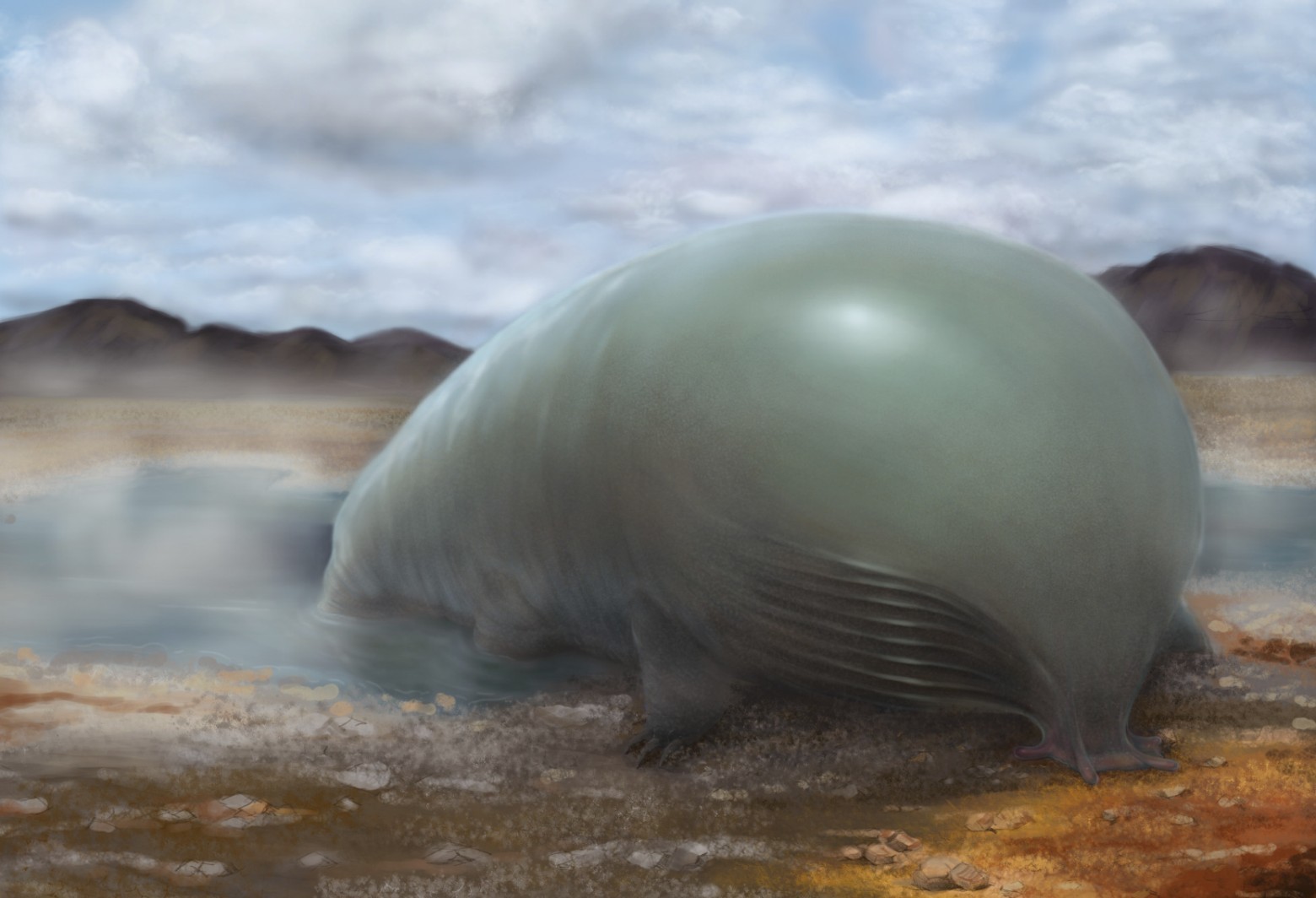Silicon life can be synthesized on Earth

Life form based on silicon organic. Render: Lei Chen and Yan Liang (BeautyOfScience.com) for California Institute of Technology in Pasadena
Sci-fi authors have long assumed that alien life does not have to be based on carbon. For example, the base carbon analog in the periodic table - silicon (Si) can be used as the basis. It is similar to carbon in some chemical properties. For example, like carbon atoms, silicon atoms are characterized by the state of sp 3 hybridization of orbitals. Specialists call silicon the most likely candidate for the role of a structure-forming atom in alternative biochemistry.
The only strange thing is that for some reason no such organisms were found in the terrestrial nature. Living cells stubbornly refuses to use silicon on their own. But if nature can not take this step and go to silicon - you can help her. Specialists from the Department of Chemistry and Chemical Technologies at the California Institute of Technology in Pasadena for the first time in the history of science obtained organic cells with a carbon-silicon chemical bond using a live biocatalyst . About this discovery today November 25, 2016 wrote the journal Science .
Silicon makes up almost 30% of the mass of the Earth’s crust; it is the second most abundant chemical element on Earth. Despite this, not a single living organism capable of forming carbon-silicon chemical bonds has yet been found. For some reason, organic silicon-based blends are not found in nature, although they are excellent materials that are synthesized and used in industry and medicine. For example, in research on new drugs, carbon is replaced by silicon to circumvent patent restrictions on standard formulas with carbon. Chemistry also uses organic polymers based on silicon . They are used in agriculture and the semiconductor industry.
')
Although silicon is abundantly present in the earth's crust, it is very difficult to synthesize organic silicon polymer using standard methods. This is a multi-step technical process, which in some cases requires the use of catalysts made of precious metals (rhodium, iridium), low temperature, and halogen-containing solvents.
The procedure is very complicated, so scientists thought that for such a task it would be best to use a genetically modified biological enzyme. It is known that enzymes are able to carry out various chemical reactions with high accuracy and efficiency is much higher than that of standard methods of chemical synthesis. In this role, the enzyme acts as a biocatalyst. It is easy to include in a number of other biomedical techniques.
Enzyme to create silicon organic - a cheap way to use resources from the environment. The process will go on in natural conditions without additional efforts and outside help.
Scientists from the California Institute of Technology in Pasadena have suggested that hemoproteins , which in their original form in a living organism contain non-protein components: iron or magnesium, are best suited for this task. Such proteins include hemoglobin and its derivatives, chlorophyll-containing proteins and enzymes, etc.
In theory, a modified hemoprotein could be a catalyst for the incorporation of carbene (a divalent carbon compound) into a silicon-hydrogen chemical bond. Thus, there would be a binding of silicon with an organic protein chain. Scientists have tested several terrestrial organisms in whose body this hemoprotein is present - and found the most suitable organism. This turned out to be extremophile bacterium Rhodothermus marinus , which lives in the geysers of Iceland.
Scientists have taken from the bacterium Rhodothermus marinus a hem-containing protein cytochrome c - and introduced it into E. coli , the standard bacterium for such gene experiments. At first, E.coli with hemoprotein did not cope well with the task, but after three generations of mutations, the efficiency of formation of silicon-carbon bonds increased significantly.

After three generations of directed mutations, such a biocatalyst has become 15 times more efficient than any synthetic catalyst for the synthesis of silicon-organic polymers.
In the video: the structure of a small hem-containing cytochrome c protein in Rhodothermus marinus. In the central region visible atom of red iron. Researchers modified amino acids in the area marked in pink so that this hemoprotein could work as a catalyst for the formation of silicon-carbon bonds
Researchers faced the task of cheapening and optimizing the production of silicon organic polymers that industry needs. They did not set the task to create silicon or silicon-carbon life. But involuntarily, scientists have taken the first step on this path. Genetically modified bacteria are able to create silicon-carbon bonds in living cells. Theoretically, they can be used to grow living organisms based on carbon-silicon biochemistry, as was supposed in science fiction.
Scientific work published November 25, 2016 in the journal Science (doi: 10.1126 / science.aah6219)
Source: https://habr.com/ru/post/369917/
All Articles